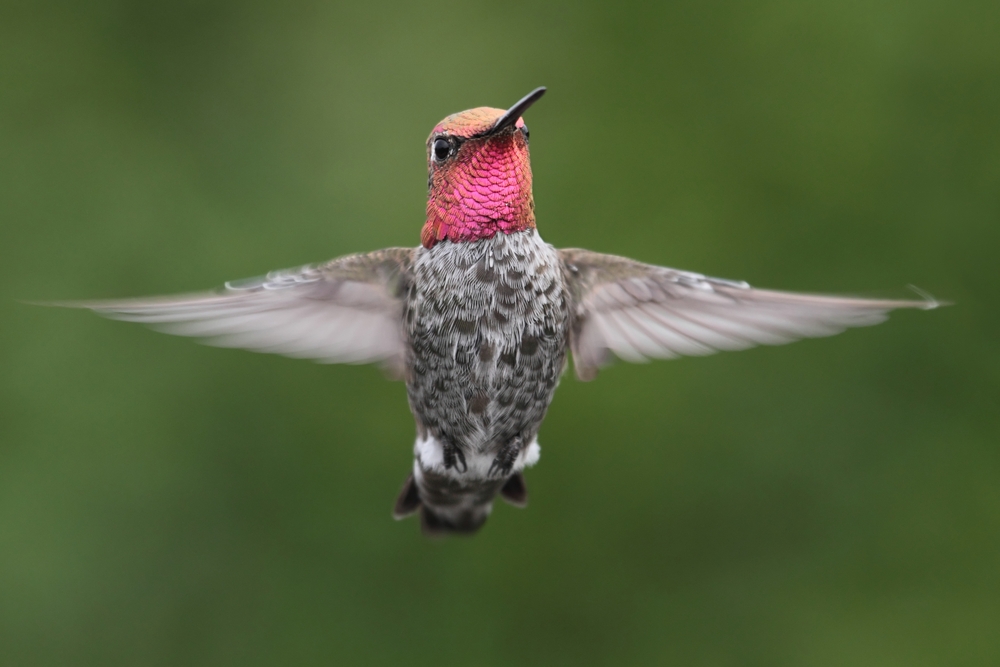Hummingbirds are such beautiful creatures, and Washington is full of them. There are more than 300 species of hummingbirds in North and South America alone. Four species reside in Washington and are the smallest migrating bird.
The best time to watch them is in August after the breeding season. These Washington state hummingbirds prepare to travel south for the winter. They migrate separately from other birds and travel up to 500 miles per day.
Types of Hummingbirds in Washington State
There are four main hummingbirds in Washington, Anna’s, Calliope, Rufous, and Black-Chinned hummingbirds. They love the valleys, forests, and mountains in Washington.
Anna’s Hummingbirds (Calypte anna)
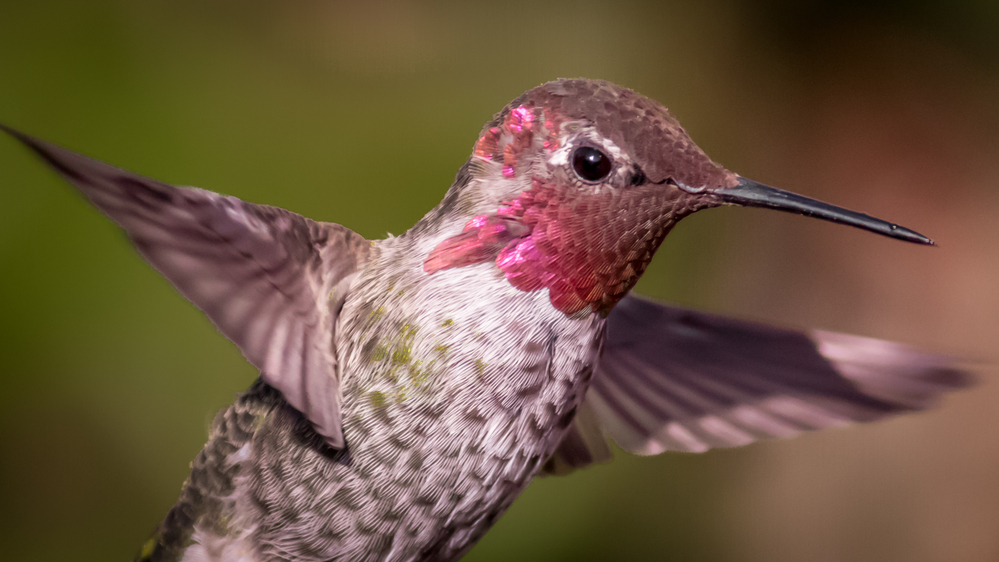
Anna’s hummingbirds live year-round in Washington state. You will find them in gardens, open woods, coastal valleys, and parks outside cities. These beauties like areas with easy access to food, flowers, and shelter.
During cold weather, they gain weight as they convert sucrose to fat or lower their metabolism and remain inactive.
Physical characteristics
Anna’s hummingbirds are the largest hummingbird in the area. Their tiny wings create a humming sound, which is where they get their name. They are moderately-sized birds with short straight beaks and long sloping foreheads.
Males and females have similar yet different colorings. Both genders have bronze-green backs and gray chests and bellies. Males have bright red heads and necks while the females are green with some red on their throats. Tail feathers also vary as males are all black/gray, and the tips of female tails are white.
Diet
Anna’s hummingbirds feed on nectar from eucalyptus, gooseberry, honeysuckle, manzanita, and currant plants. They eat small insects and spiders they find in crevices, under leaves, on stream banks and flowers. You may also find them sucking sap from trees.
Behavior
Anna’s hummingbirds are the most vocal of all hummingbirds. They are very territorial, and the males will protect their habitat by diving toward other birds and people while making high-pitched popping sounds with their tail feathers.
Habitat
Nesting is a role of the female where she chooses the perfect tree to build her nest. She looks for high branches of trees or shrubs near nectar supply, such as oak, sycamore, or eucalyptus trees.
Calliope Hummingbird (Stellula calliope)
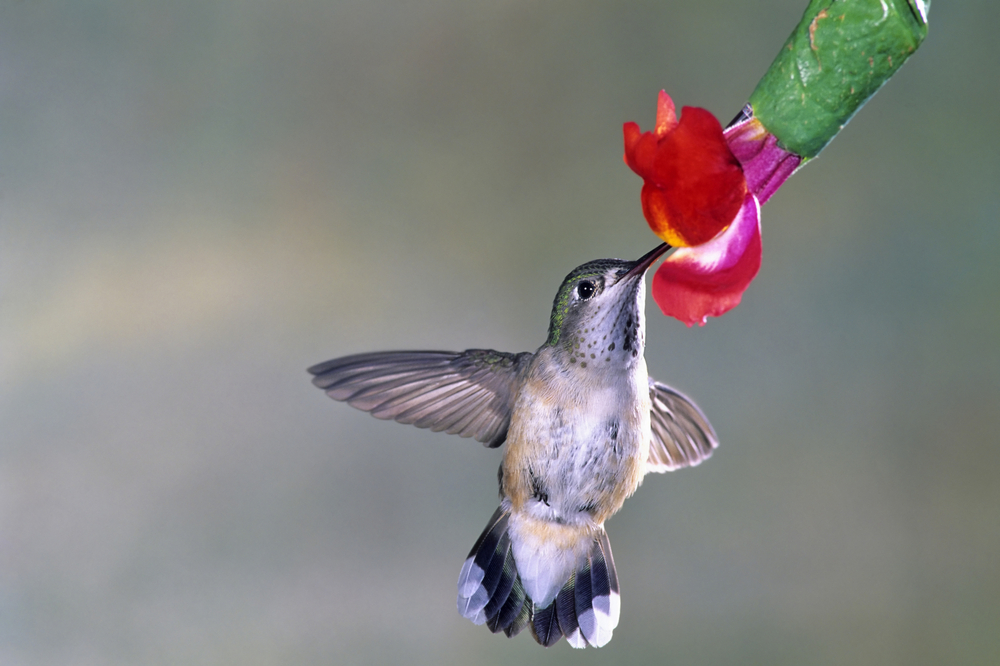
Calliope hummingbirds in Washington are smaller with crouched postures. Although they are the smallest birds in the country, they can tolerate cold summer nights in the mountains and migrate over 5,000 miles south for the winter.
Physical characteristics
Both genders have short wings and tails, and their bills are smaller and thinner than other hummingbirds. The male Calliopes have magenta streaks on their throats and shiny green feathers on their backs.
The wings and tails of females are shorter than the males. The females’ backs are also green with some bronze and a peach belly. The smaller hummingbirds weigh about one-tenth of an ounce and are roughly three inches long.
Diet
These Washington state hummingbirds drink nectar from cup-shaped and tubular flowers that larger hummingbirds ignore. They watch for insects from up high and then swoop in to catch them mid-air. In yards, they will feed on a home-made sugar-water mixture.
Behavior
The male shows off for the female by diving down towards her and ascending back up. While he does this, his tail feathers buzz, and he calls out with zest. Hummingbirds are protective of their territory and watch from treetops.
Habitat
The Calliopes prefer habitats in canyons, mountains, and foliage near streams. Calliope hummingbirds breed at elevations up to 11,000 feet in mountainous regions and open woodlands. To protect their young, female Calliopes nest on the branches of evergreens where old pine cones grew.
Rufous Hummingbirds (Selasphorus rufus)
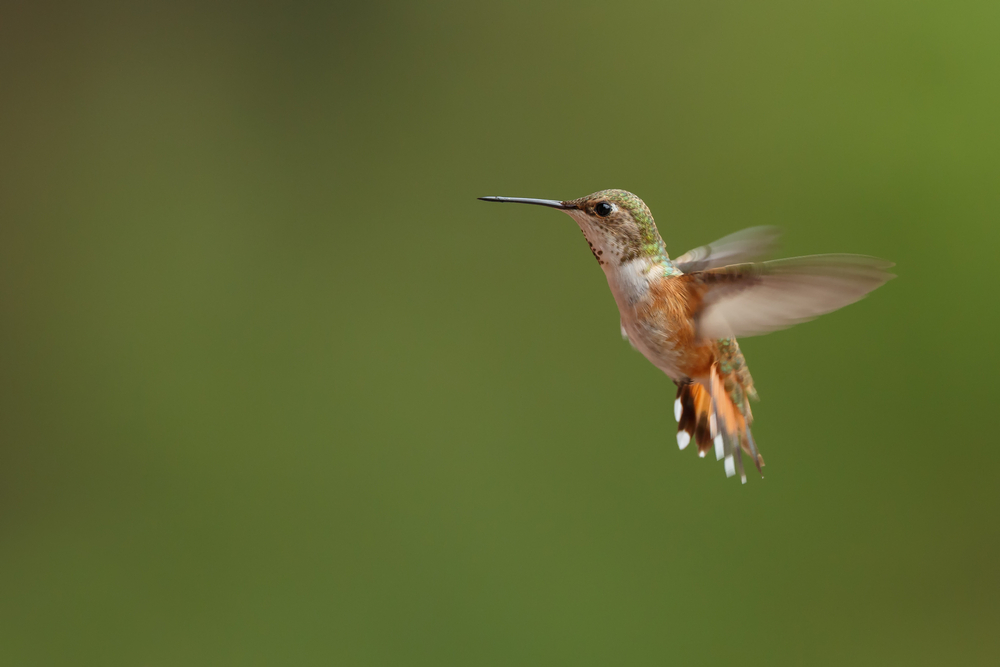
Rufous hummingbirds are the only rufous-backed hummingbirds in North America. They breed in the north and travel 2,000 miles at 25 MPH to migrate for the winter. Adult males leave before the females and younger hummingbirds.
Physical characteristics
Rufous hummingbirds can live up to eight years old. They have small, compact statures just over three inches long. These beauties weigh slightly more than a penny (about three to four grams). Their medium-length black bills are straight. They have short wings that do not extend to the end of the tail.
Adult males are primarily orange, with bright white chests and greenish backs. Iridescent colors covering the throat vary from red to lime green in the light. Females have orange on their necks, sides, and parts of their rusty flanks and tail feathers. They are green on their upper backs and tail.
Diet
Rufous hummingbirds will travel to the southwest deserts of the U.S. and Mexico in search of their favorite plants, such as red mint flowers, morning glories, and shrimp plants for nutrition. They feed on nectar from flowers and tiny insects.
Behavior
The males are hawkeyes when it comes to protecting their habitats. Unlike other hummingbirds, they can become aggressive. The Rufous hummingbirds anger easily and are ready to fight at a moment’s notice. Though small, they can fight off birds much larger and anything else that appears threatening to their environment.
Habitat
They like wooded areas, meadows, suburbs, and areas with lots of brush in the northwestern U.S. and Canadian woodlands. Females nest as far up as Alaska, which is higher than any other species.
Black-Chinned Hummingbirds (Archilochus alexandri)
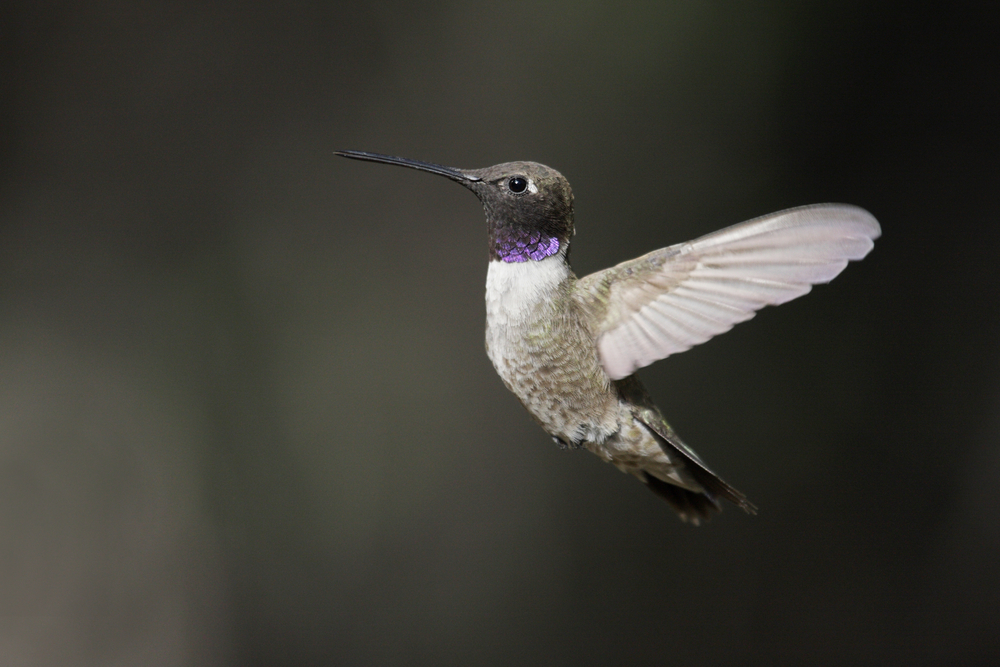
The Black-chinned hummingbirds, also known as Alexander hummingbirds, live up to 10 years. These hummingbirds in Washington state have sensitive hearing and can detect ultraviolet light.
Physical characteristics
A Black-chinned hummingbird grows to 3 3/4 inches long and weighs roughly 2.7 to 4.2 grams. These beauties have smaller heads with long bills that slightly droop at the point. Their feathers are green with white on the belly and have slender bodies.
Males are easy to distinguish from other species, thanks to the purple and black neck feathers. Their heads have greenish-gray colors. Their heads have greenish-gray colors. The females have white necks with a slight hue of green streaks and a dark rounded tail, much like the Ruby-throated hummingbird.
Diet
They feed on nectar from flowers and hummingbird feeders. They help the environment by transferring some of that nectar between flowers. In winter, these birds ingest three times their body weight in nectar. They get their protein from eating insects.
Behavior
Aggression can cause them to chatter raspy and flutter their wings. Males fly in a U-pattern and dive towards a female to impress her. During the breeding season, the males will mate with more than one female They do not stay to help raise the offspring.
Habitat
They live primarily in Northwestern U.S and small parts of Canada. They adapt well to many habitats, including those near streams and waterfalls.
They thrive well in mountainous valleys, alpine meadows, gardens, and parks in the suburbs. You will also find them in areas with vegetation, orchards, canyons with thickets. Red flowers are repellents to hummingbirds.
How to Make Your Backyard Attractive for Hummingbirds
If you see hummingbirds in your yard, take care of them. Provide fresh water all year long and plenty of nectar during the winter for the beauties to survive the cold. The sucrose in the nectar will provide them with the energy they need during the day.
Set out wildlife-friendly plants only and keep nectar feeders warm with low-watt bulbs (no LED). It is best to supply more than one feeder and bring them in at night since birds do not feed after sundown.
Home-Made Nectar
You can make nectar to put in the feeders:
- Mix one part of white sugar with four parts of water to provide a healthy balance of nutrients.
- Heat the ingredients in a pan on the stove and let it boil.
- Remove the pan from the heat and allow it to cool.
Clean the feeder once a week during the winter and twice weekly in the summer. Discard the remaining nectar with each cleaning. Temperatures down to 29 degrees will freeze the nectar. To prevent freezing, switch out the feeders to keep fresh nectar available.
When to Feed the Hummingbirds
When you see sunflowers, daffodils, and ornamental flowering cherries start blooming, it is time to set out your nectar feeders. Remove the feeders when hummingbirds leave the area.
Keeping the Pests Away
Pests like ants and wasps can become a nuisance and invade the hummingbirds’ space.
Ants
Since they crawl, ants enter the feeders from above and work down the hangar. The way to deter those pesky insects is with water. Ants are not able to move in the water. Mounting a moat above the feeder will stop ants in their tracks. Some feeders will come with built-in moats.
Wasps
Wasps are more challenging to control. Since they fly, they can access the nectar quicker. A couple of tips can help keep them out of the way.
You can buy rubber tips that only hummingbirds can penetrate to the nectar or small cages to place on the outside so insects with short tongues can’t reach the nectar. The second option is to set up traps for the wasps near the feeders.
